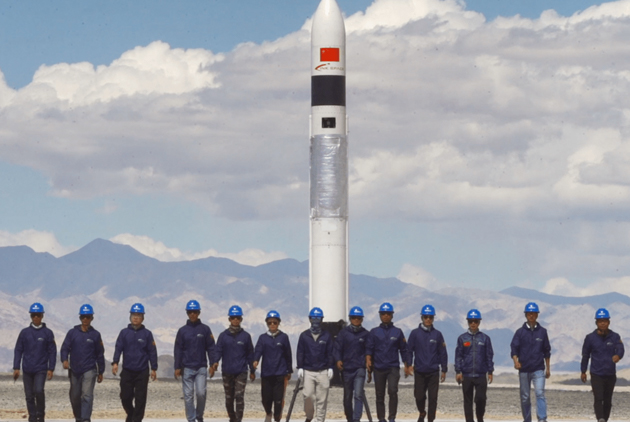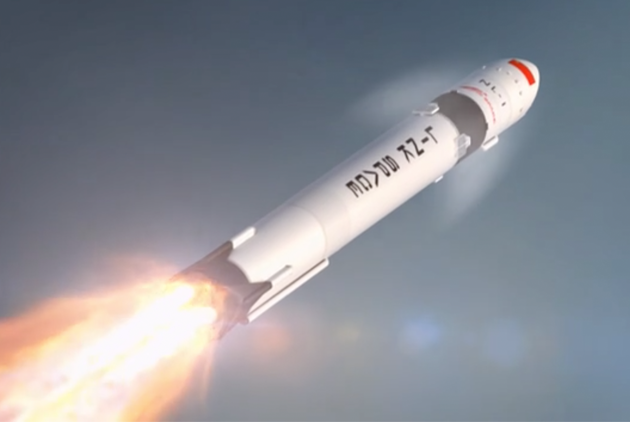China's New Space Economy and Taiwan’s Opportunity

Source:Link Space's website
Taiwan is a component supplier to the global New Space industry. While Taiwan is not building space stations modules, it is indeed well-positioned to take advantage of New Space industry growth especially in areas where China cannot.
Views
China's New Space Economy and Taiwan’s Opportunity
By Jason Wang, Mark Matossianweb only
Taiwan and China are emerging players in the New Space revolution.
Last month, a privately owned company announced their partnership to supply a biology laboratory to China's Large Modular Space Station by 2022. The announcement was not from an established company like Boeing but a Huzhou-based startup called Rocket Pi. Rocket Pi is just one of many private space startups fostered by China’s military-civil fusion to become a dominant player in space. As of 2020, China has launched more payloads into space than the US government and has reorganized its ministries to facilitate the burgeoning domestic New Space startup ecosystem.
So, what about Taiwan’s role in the space industry? Taiwan is a component supplier to the global New Space industry. While Taiwan is not building space stations modules, Taiwan is well-positioned to take advantage of New Space industry growth especially in areas where China cannot. But what is New Space, and how are these companies different from traditional players?
New Space - what it is, what it isn't
New Space is a disruptive new take on space activities. The business of manufacturing rockets and launching payloads was based on cost-plus contracting rather than fixed-fee pricing. Traditional defense companies like Lockheed and Boeing had little incentive to control costs or innovate. SpaceX transformed the launch market with transparent low pricing and predatory disruption of the rival Ariane 5. Then SpaceX turned the marketplace entirely upside down by doing the impossible: recovering and reusing the expensive first stage of the rocket (60% of the launch cost), with one having launched nine times as of this writing. Rivals are still trying to define a competitive response. During the space shuttle era, it cost USD 54,000 per kilo versus USD 10,000 today.
Falcon 9’s first stage has landed on the Of Course I Still Love You droneship! pic.twitter.com/7QzVxkCuI4
— SpaceX (@SpaceX) May 15, 2021
The old, expensive launch prices and conservative engineering approach slowly created a commercial space industry, but one that narrowly focused on 10-15 year geosynchronous telecommunications spacecraft missions with pre-sold capacity. The industry avoided risks at all costs. Meanwhile, a small grassroots movement of enthusiasts began building tiny satellites called “CubeSats.” They embraced nontraditional hardware components, open-source software, and gradually improved performance until they could compete commercially with traditional aerospace, especially as constellations of many spacecraft. SpaceX, and Indian and Russian rockets, provided inexpensive “rideshare” launches of mixed smallsat payloads, which decisively solved the launch chokepoint.
Today, New Space startups deliver hundreds of satellites with a wide range of capabilities into orbit at a pace previously unimagined even a decade ago. Faster design iterations mean more capable and powerful satellites reach orbit sooner.
Consequently, the New Space industry is evolving via economies-of-scale, much like how the iPhone changed the world. Chinese policymakers have taken note.
New space with Chinese characteristics
In response to the New Space revolution in the West, China has reorganized its ministries to follow suit. The nimbleness and rapid iterations of China’s domestic startups means government resources could be focused elsewhere. This strategy is yielding results.
In November 2020, domestic New Space startup, Galactic Energy, launched the 770lb Tianqi 11 communications satellite into low earth orbit using their own privately developed Ceres-1 rocket.
This might not be remarkable in light of SpaceX's achievements, but Galactic Energy launched just three years earlier.
 (Source: Link Space's website)
(Source: Link Space's website)
To ensure domestic New Space startups reflect "Chinese characteristics," domestic New Space startups are influenced by the State via direct ownership stakes, board-level proxies, and university funding. Furthermore, supply chain relationships with the two-state-owned enterprises still dominate the bulk of the domestic space industry: China Aerospace Science & Industry Corporation Limited (CASIC) and China Aerospace Science and Technology Corporation (CASC) serves as another lever of influence. These are all part and parcel of China’s military-New Space fusion national strategy to rapidly upgrade China’s defense industrial base and efficiency - all critical to China’s larger ambitions as a global player.
China's space ambitions
China cannot control the South China Seas and East Asia without dominating space first. Space-based platforms enable intelligence, surveillance, and reconnaissance capabilities of at-scale. Space-based and ground-based platforms also provide offensive capabilities to deny the use of space-based assets for adversaries. Chinese military analysts need to generate and process massive geo-intelligence data sets. They require low earth-orbiting satellites and cloud computing data centers with powerful GPU chips to drive machine learning algorithms.
China's 'space dream': A Long March to the Moon and beyondhttps://t.co/LY40J6UCrd
— AFP News Agency (@AFP) April 29, 2021
📸 People watch a Long March 5B rocket, carrying China's Tianhe space station core module, as it lifts off from the Wenchang Space Launch Center in Hainan province pic.twitter.com/hbi9dj8K54
China's state-owned enterprises are not suited to technical agility and rapid development of hardware and software. Therefore, the military-New Space fusion - specifically with the nimble New Space sector - provides critical leverage from the innovative private sector to accelerate Chinese military capabilities.
Over the last decade, China has restructured its ministries to support this strategy. China even has a special branch of the military: the Strategic Support Force, created in 2016. This theater-level command houses China's information-related units from strategic space assets to cyberspace, electronic warfare, and information operations.
Lingering questions
The State Council’s focus on developing a domestic New Space ecosystem has resulted in a domestic ecosystem of “privately” owned enterprises aligned with its military-New Space fusion national strategy.
While the emergence of a global New Space economy is exciting, China’s aggressive actions in India, the South China Sea, and Taiwan are concerning.
The blurred lines make it difficult for international investors and partners to participate in China’s New Space economy, whereas New Space opportunities with Taiwanese entities would not carry that burden.
China has opened and then dominated many markets through mass production and low pricing. However, the selections of spacecraft components require deeper customer-supplier relationships based on trust before cost due to the high impact of an in-orbit failure. Further, the sheer magnitude of Western constellation deployments, such as SpaceX’s Starlink, Amazon’s Kuiper, or Telesat’s Lightspeed, is sized beyond anything deployed by China. These volumes result in unprecedented economies of scale and flight-proven components that will become a de-facto standard. Trust, scale, and flight heritage will be significant obstacles for Chinese competitors in Western markets.
One method New Space ventures keep costs low is to reject the traditional use of expensive, radiation-hardened electrical components in favor of rugged automotive-grade parts. Specific software for circuit design, engineering analysis, or machine learning algorithms is also used for space missions and thus considered “dual-use.” Dual-use hardware and software pose a formidable challenge to policymakers trying to restrict the flow of sensitive technologies to China and elsewhere.
The New Space approach to building, launching, and operating satellites is not only here to stay, but it has revitalized the space industry. China now appears to be embracing New Space, but will New Space with Chinese characteristics be self-limiting for international investment and partnerships? Breaking into Western markets for export will not be easy for Chinese New Space efforts when typical Chinese competitive strategies encounter the wall of trust, scale, and shared flight heritage data. How will they adapt? Finally, technology restriction strategies such as ITAR were already difficult to define and enforce for dual-use technologies. How will Western policymakers adjust to growing applications of dual-use technologies that New Space accelerates?
Opportunity for Taiwan
China’s New Space startups have a complicated path forward that Taiwanese companies do not face.
Western companies prefer working with Taiwanese companies, given Taiwan’s approach to a rules-based intellectual property regime, as evidenced by Taiwan’s role in cutting-edge semiconductors and advanced biotechnology and machine learning.
Taiwanese technology leadership should recognize and seize this opportunity to leverage the products and services at the high end of their portfolio retained in Taiwan. Some Taiwanese companies are already winning significant business in the West’s New Space economy - a sharp illustration that Taiwan is uniquely suited to take advantage of this opportunity.
About the author:
馬拓賢博士 / Mark Matossian, Ph.D
Dr. Mark Matossian founded Efficient Frontier | SPACE to coach the next generation of cross-functional New Space leaders and develop cutting-edge New Space startups. Dr. Matossian has worked on ten satellite constellation ventures in telecom, optical imaging, and synthetic aperture radar (SAR). He is a Silicon Valley veteran of 20 years, including telecom and IT startups and Google’s data center, Android, satellite, and virtual reality projects across four continents and Taiwan.
王柏仁先生 / Jason Wang
Mr. Wang is a leading cross-border practitioner at the intersection of public policy, telecommunications, media, and technology. He is a Silicon Valley and DC veteran with deep experience in satellite technologies, mobile communications, and information security across four continents and Taiwan.
Have you read?
♦ Pratas Island Tensions: Could This Be War?
♦ Are Chinese and US Maneuvers in the Asia-Pacific a Precursor to War?
Uploaded by Penny Chiang






